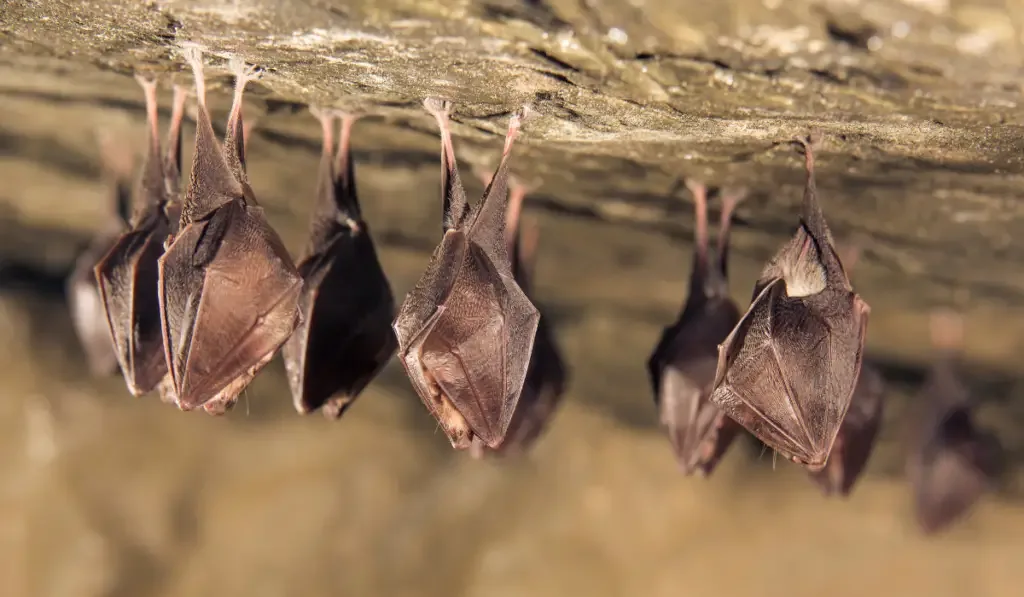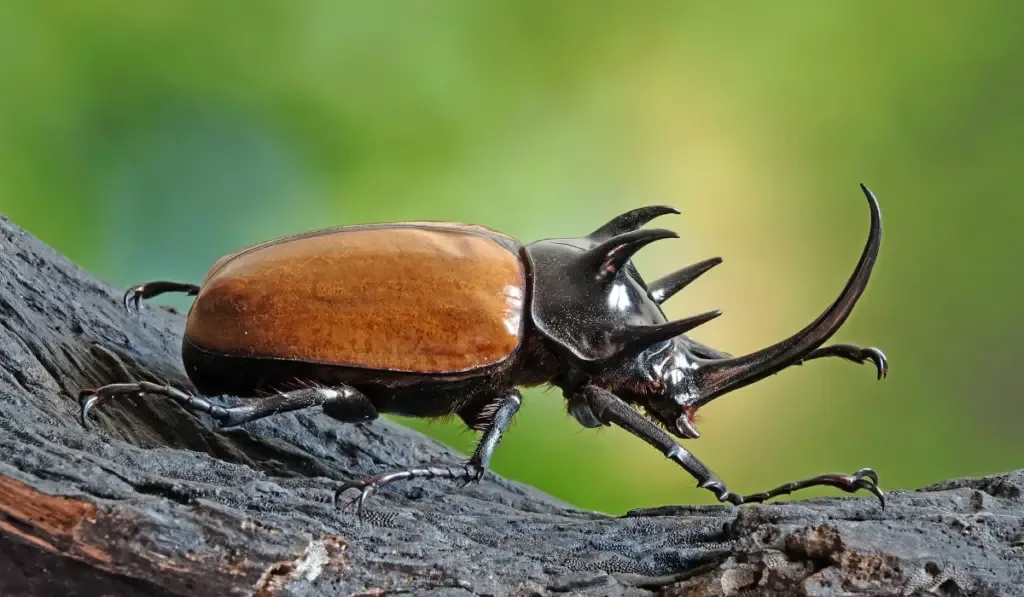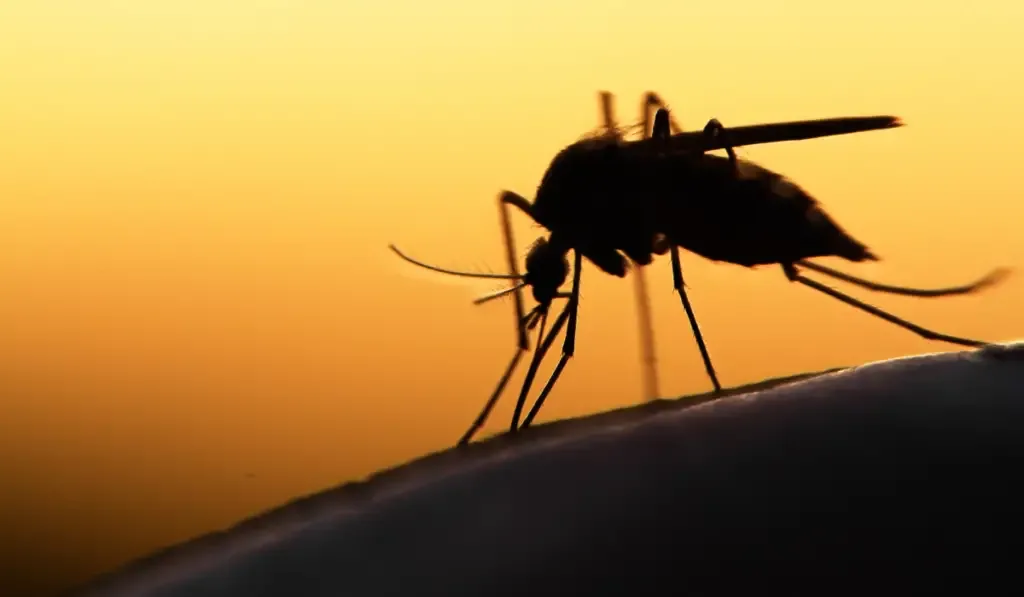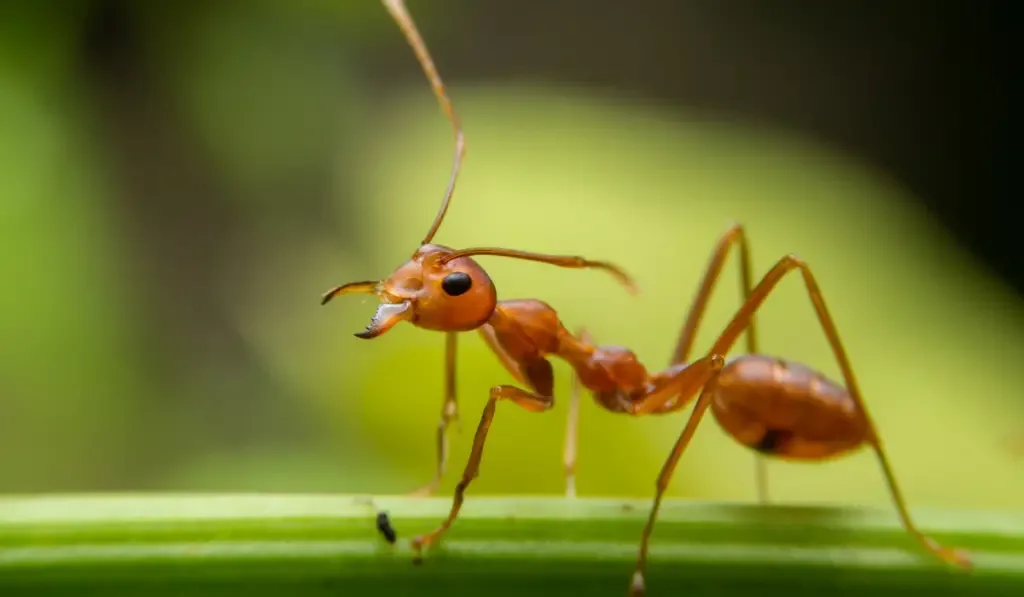If you live in an area where bats are common, then you may have had a bat fly into your house. While these cute creatures can be frightening and annoying at first, it’s important to know that they don’t cause any harm. They’re simply looking for food!
Bats are true masters when it comes to hunting for food, particularly at night when most insects are active. Do you know what insects bats love to eat?

The following is a list of 17 popular types of insects that bats love to eat:
Table of Contents
1. Moths
Of all the insects on this list, moths are probably the most common prey for most bat species. There are different species of moths eaten by various bat varieties.
Some bats have spiny hairs and barbed tongues that help them catch moths in midair. Other bats have flat tongues that act like shovels to scoop the insects into their mouths.
One type of bat that eats moths is the Spotted Bat, which emits a loud screech right before it swoops down to catch its prey.
2. Beetles

Most bat species eat beetles, and a number of them are nocturnal hunters, just like their prey.
Female bats can carry more than their own weight in beetles.
The Brazilian Brown Bat is another variety of bat that eats both beetles, flies, and other insects.
It has large ears that help detect the fluttering wings of insects as they try to escape. Once a bat spots an insect, it will make a high-pitched call which causes the insect to freeze in mid-air. Then, the bat swoops down and picks up its prey.
3. Wasps
Some bats, such as the California Leaf-Nosed Bat, eat both beetles and wasps in addition to other insects.
They are particularly fond of wasps because they tend to try to sting the bat, and so make themselves vulnerable to being caught.
4. Flies
Flies make up a majority of the bat diet, particularly when these flies are flying around water sources. Bats that live near rivers, lakes, and swamps eat a lot of flies because insects are usually attracted by water.
5. Mosquitoes

Mosquitoes are one of the most common insects bats eat due to their abundance and nocturnal habits. In fact, it is estimated that Spotted Bats can catch over 1,000 mosquitoes in one hour and about 8000 mosquitoes in a single night.
This tidbit should help you be more welcoming to the bats because it will make you enjoy your backyard without so many annoying mosquitoes.
6. Dragonflies
Dragonflies are another commonly eaten insect pest by various bat species such as the Northern Bat, California Leaf-Nosed Bat, Vesper Bat, and the Pallid Bat.
These dragonflies are easy pickings for bats because they often perch on branches or leaves to rest, thus making them easy prey for bats.
7. Ants

Some bats favor ants because their colonies make it easier to obtain food.
Once a bat finds an ant colony, it will either pick off ants one by one or emit a screech that will confuse the insects so they mill around until the bat can catch them with ease.
8. Cicadas
Bats that live near cicada-infested trees stand a good chance of catching their favorite meal every night.
Cicadas are large insects that some bats catch in mid-air with a high-speed dive. When the bat catches one, it flies to a branch and bashes the cicada against it until its exoskeleton cracks and it is soft enough to eat.
9. Grasshoppers
Most varieties of bats around the world have been observed catching grasshoppers and crickets, making them one of their favorite meals.
The insects are usually caught in mid-air by the bats but can also be scooped up off surfaces like leaves, branches, and rocks.
10. Butterflies

The Mexican Free-Tailed Bat is another variety of bat that eats butterflies, particularly when they are fluttering around flowers or resting on vegetation during the day.
This type of bat also emits a high-pitched sound that causes the butterflies to freeze in mid-air so they get easily caught.
11. Flies
The Silver-Haired Bat has been observed catching flies and beetles in mid-air using its large, pointy ears to locate insects even while they are flying around rocks, trees, and buildings at night. This type of bat is most active during the summer months.
12. Spiders
Spiders are on the menu for a large variety of bats, including the big brown bat, which will emit a high-pitched call just before it swoops down to catch its prey and then wrap its wings around it as it eats.
The Mexican Free-Tailed Bat also likes to eat spiders, but instead of emitting the signature high-pitched sound, they use their long tongue to catch their spiders.
How Bats are Beneficial
There are many reasons to love bats. They are keystone predators that help to regulate the populations of many insects by controlling the spread of various diseases carried by those insects.
Besides eating pests, bats also provide pest control services by consuming agricultural pests such as fruit flies and beetles without damaging crops.
Bats are responsible for pollinating many fruit species, such as bananas, mangoes, and avocados. Bats are also responsible for spreading nuts, cacao (the main chocolate ingredient), and fig seeds. Bats have helped preserve plants like agave and saguaro cactus from extinction.
The average bat has a big appetite, meaning they have the potential to save you thousands of dollars on bug zappers and mosquito repellents.

How Bats Find Insects
Unlike flying birds and mammals, bats can not see very well because they have poor eyesight. So, to find food, they use echolocation(sonar), which sends out clicks that bounce off nearby objects and then returns the echoes.
Bats love eating insects because they are an excellent source of protein and energy and are found almost anywhere.
Fun Facts About Bats
Having read about what insects bats love munching on, it is only fair that you learn some fun facts about them.
- They live more than 30 years.
- They fly at a speed of 60 miles/hour or more.
- The young one of a bat is called a pup.
- Bat droppings are very rich fertilizers.
Final Thoughts
Bats are fascinating and remarkable animals that deserve more appreciation than what they get. They provide pest control services and also help pollinate plants.
If you wish to help the bat population in your locality, you can consider adding bat houses to your property, even if you live in an urban area where these creatures cannot be found naturally.
This will help preserve these precious creatures as they will be more than happy to find a place to call home.
Sources:
- https://www.doi.gov/blog/13-facts-about-bats
- https://www.knockoutmosquito.com/bats-mosquito-charleston-south-carolina/
- https://www.nhm.ac.uk/discover/evolutionary-war-between-moths-bats.html
- https://www.nature.org/en-us/about-us/where-we-work/united-states/arizona/stories-in-arizona/top-10-bat-facts/
